Posts by John Dudovskiy
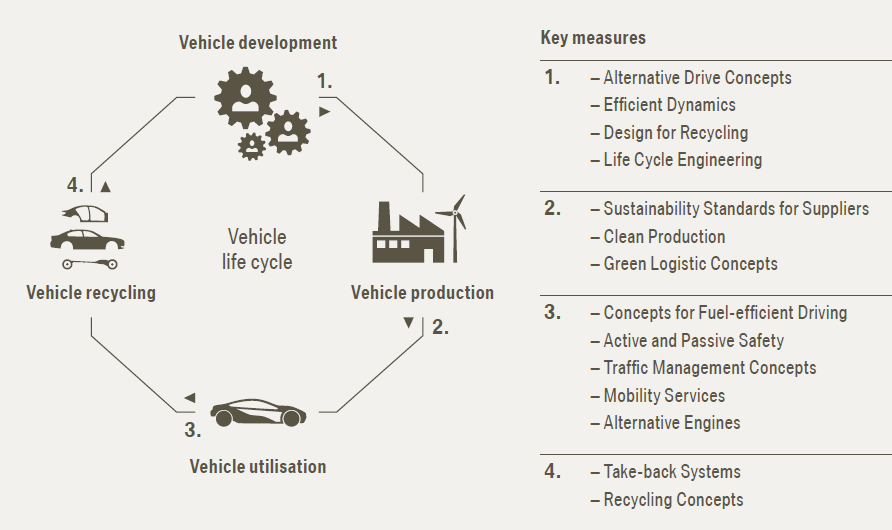
BMW CSR strategy aims to achieve the highest level of sustainability during the each stage of the vehicle life cycle via implementing the relevant set of measures and initiatives. The figure below illustrates the key measures at each stage of the vehicle life cycle process: BMW sustainability throughout the product life cycle[1] BMW Group has won a number of awards for its sustainability efforts. These include the following: Re-gaining the first place in automobile industry in Dow Jones Sustainability Indexes (DJSI) in 2015 Achieving 100 out of maximum 100 points for transparent reporting according to CDP. Being listed on FTSE4Good an index of the British index family on sustainability and corporate governance provided by FTSE in London. BMW CSR Programs and Initiatives The company releases Sustainable Value Report annually and it includes the details of CSR programs and initiatives engaged by the company. Table 3 below illustrates highlights from the latest report for 2015: Categories of CSR activities BMW Group Performance Supporting local communities Care 4 Water initiative carried out in collaboration with the non-profit organisation “Waves For Water” involves employee fundraising activities in more than 50 countries to enable communities to secure their own access to clean water Educating and empowering workers Employees for certain positions are offered flexible working hours such as sabbaticals or “Vollzeit Select” (Fulltime Select) scheme In 2015 BMW Group invested EUR 352 million for employee education and training and development purposes. On average BMW Group employees participated in 4.1 days of training programs in 2015. Labor and human rights Starting from 2016, the company has announced the gradual integration of human rights requirements into global Compliance Management System Employee health and safety Health Management 2020 program has been launched to assist employees to improve and maintain their health. Since its launch in 2014 10,100 employees…
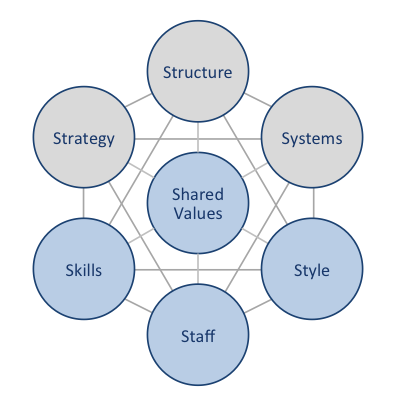
BMW McKinsey 7S framework illustrates the manners in which seven elements of businesses can be aligned to increase effectiveness. McKinsey 7S framework recognizes strategy, structure and systems as hard elements, while shared values, skills, style and staff are accepted as soft elements. According to the framework, there are strong links between elements in a way that a change in one element causes changes in others. As it is illustrated in Figure 13 below, shared values are positioned at the core of BMW McKinsey 7S framework, since shared values guide employee behavior with implications in their performance. McKinsey 7S Framework Hard Elements Strategy. BMW Group business strategy can be described as product differentiation and accordingly, the company positions itself as a premium brand in an automobile industry. BMW Group pursues differentiation business strategy with a focus on advanced technological features and capabilities and digitalization of its vehicles according to its Strategy Number One. Moreover, the company strategy attempts to associate ownership of BMW Group vehicles with personal achievement and the representation of high status. The company communicates relevant marketing messages to the target customer segment via various marketing communication channels. Structure. BMW Group organizational structure is complex due to the size of the company and the massive scope of its operations. Yet, BMW organizational structure is sophisticated enough to respond to changes in the external marketplace in a timely manner. BMW AG Supervisory Board is the highest strategic management team with members organized into four committees. These are Personnel, Audit, Nomination and Mediation committees. BMW AG Supervisory Board oversees BMW AG Board of Management headed by its Chairman Harald Krüger. Systems. These relate to daily activities and procedures engaged by BMW Group employees in order to get their job done. BMW Group integrates robotics technology, IT and online platforms within its…

Value chain analysis is an analytical framework that can be used to identify business activities that can create value and competitive advantage to the business. Figure 1 below illustrates the essence of value chain analysis. Figure 1 BMW Value chain analysis Primary Activities Inbound logistics BMW Group has around 13,000 suppliers located internationally[1]. BMW adds value in its inbound logistics primary activity via minimizing transportation costs and sourcing the raw materials of the highest quality. As it is illustrated in Figure 2 below, the company purchases most of its raw materials from Germany (42.6%) and Eastern Europe (19.7%). This is because the majority of manufacturing and assembly units are based in Germany and Europe and the company purchases from trusted suppliers in close proximity in order to reduce the costs of logistics and ensure an undisputed supply. Figure 2 Regional mix of BMW purchase volumes[2] Operations BMW Group is divided into the following four business segments: Automotive. In 2015, this segment generated the gross profit margin of 17.7 per cent. Motorcycles. Gross profit margin in motorcycles segment in 2015 amounted to 22.5 per cent. Financial Services. This segment deals with providing credit financing and leasing for BMW Group brand cars and motorcycles to retail customers. Gross profit margin in financial services segment equalled to 13.3 per cent in 2015. Other Entities. In 2015, this segment generated EUR 211 million profit before tax, which is EUR 57 million higher than the previous year. BMW runs a complex manufacturing network in 30 sites in 14 countries[3]. The company opened its latest engine plant in Shenyang, China in January 2016. In terms of sales BMW Group is represented in more than 150 countries worldwide. BMW Group adds value to its operations primary activity mainly via the use of robotics technologies to a considerable…
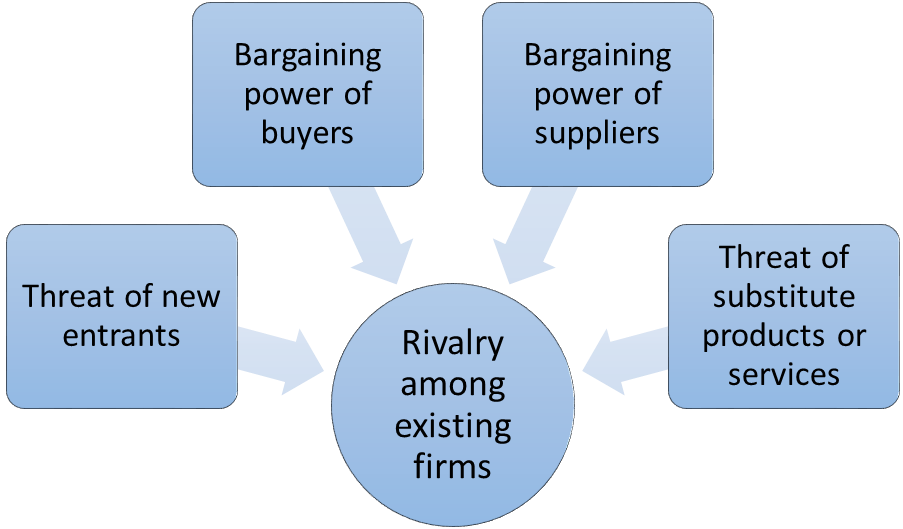
Porter’s Five Forces is a strategic analytical model developed by Michael Porter (1979)[1] and it is used to assess the overall competitive climate in an industry. Porter’s five forces are represented in Figure 1 below: Figure 1 BMW Porter’s Five Forces Threat of substitute products or services is insignificant. It is important to clarify that there are different substitute products and services for luxury cars than cars in general. Specifically, substitute products and services for cars in general as means of transportation include bicycles, motorcycles, underground (subway), buses and other forms of public transportation. The threat of substitute for cars in general as a means of transportation can be assessed as high. Luxury car segment, on the other hand, is different in a way that they are purchased to satisfy needs beyond transportation. People purchase BMWs, Rolls-Royces, Porches and Mercedes Benzes as a means of self-expression to satisfy their need for self-perception of achievement, success and status. From this point of view, it can be argued that the threat of substitute products and services for luxury cars is insignificant, because owning a luxury car is a ‘must-have’ for wealthy people and the need for a luxury car often comes before the need for luxury watches, yachts, villas and other attributes of a rich lifestyle Rivalry among existing firms is intensive. There is a fierce competition in the global market of the premium car segment and the extent of differentiation between vehicles of each individual brand is significant. The level of advertising expenditure and the efficiency of the marketing communication strategy play critical role in the luxury car segment since businesses operating in this segment attempt to charge extra money for the perception of status, achievement, recognition and success associated with owning their vehicles. As it is illustrated in Figure 2 below, in…
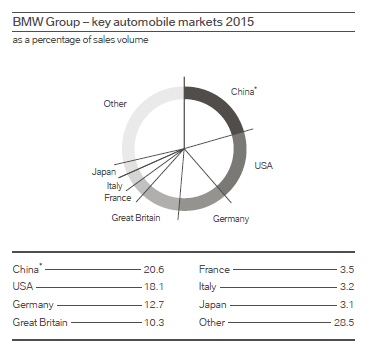
BMW’s 7Ps of marketing consists of product, place, price, promotion, process, people and physical evidence elements of the marketing mix. Product. BMW Group is engaged in development, manufacturing and the sale of engines as well as all vehicles equipped with those engines. BMW Group owns and sells its vehicles under the following three brands: BMW MINI Rolls Royce The company pursues product differentiation business strategy and maintains 13 research and development centres in five countries[1]. Vehicles produced under BMW Group brands belong to the premium segment and accordingly, they have highly efficient and reliable with advanced set of features and capabilities. BMW leads the automobile industry in electromobility and the brand is also famous for achieving a high level of integration of internet and digitalization in its vehicles. Place. BMW Group has about 6,000 dealerships and sales representatives in 150 countries globally.[2] The worldwide distribution network currently consists of around 3,310 BMW, 1,550 MINI and 140 Rolls-Royce dealerships[3] In China alone, around 60 BMW dealerships were opened in 2015[4]. The dealership and agency network for BMWi comprises about 950 locations. As it is illustrated in figure below, China, USA and Germany represent the largest automobile markets for BMW Group and accordingly, these countries accommodate the largest numbers of dealership offices and representatives. BMW Group key automobile markets (Annual Report, 2015) Price. BMW pricing strategy can be described as premium. High level of reliability of BMW Group vehicles and advanced set of features and capabilities integrated into the vehicles come for expensive prices. For example, as of April 2016, BMWi3 electric car costs more than USD 45,000 and customers have to pay more than USD 100,000 for BMW X6 model[5]. Additionally, BMW uses product line pricing strategy charging different prices for different models of its products. Geographical pricing represents another important…

BMW leadership structure and BMW organizational structure is highly complex reflecting the massive size of the business and the global scale of its operations. BMW AG Supervisory Board sits on the top of the organizational structure and there are 20 members organized into four different committees (see Figure 1 below). BMW AG Supervisory Board had five meetings in 2015 and each meeting usually addresses a set of issues of a strategic nature. Figure 1 BMW AG Supervisory Board Committee One step below the Supervisory Board, there is BMW AG Board of management which comprises 8 members. The Board is led by Harald Krüger, who became the new Chairman of the Board of Management on 13 May 2015. The Board of Management directly supervises BMW Group Compliance Committee and this committee comprises the heads of the following six departments: Legal Affairs, Patents Corporate and Governmental Affairs Corporate Audit Organizational Development Group Reporting Corporate HR, Strategy and Targets The BMW Group Compliance Committee operates through the BMW Group Compliance Committee Office with ten staff members based at the Group’s Munich headquarters. Its tasks are divided into two areas: “Compliance Development and Services” and “Group Compliance Operations“. The BMW Group Compliance Committee Office is assigned to the Chairman of the Board of Management for organizational purposes.[1] The Figure 2 below illustrates the pattern of BMW Group compliance system. Figure 2 BMW Group compliance system[2] BMW Group organizational structure also integrates the components of project-based structure. This is especially true for projects related to research and development and the launch of new vehicle series… BMW Group Report constitutes a comprehensive analysis of BMW business strategy. The report illustrates the application of the major analytical strategic frameworks in business studies such as SWOT, PESTEL, Porter’s Five Forces, Value Chain analysis and McKinsey 7S Model on…

BMW Group uses a range of elements of the marketing communication mix such as print and media advertising, sales promotions, events and experiences, public relations and direct marketing in an integrated manner in order to communicate its marketing message to the representatives of the target customer segment. BMW Group marketing message is focused on high level of digitalization of BMW Group vehicles and their advanced set of features and capabilities. As it is illustrated in figure below, in 2014 BMW Group invested USD 291.4 million in advertising, which is a small increase compared to the previous periods. BMW Group advertising spending Advertising BMW Group uses print and media advertising extensively to communicate its marketing message to the members of its target customer segment. The choice of specific print and media platforms for advertisements are guided by interests of the target customer segment. At the same time, BMW is increasingly shifting into mobile media as effective advertising platforms. In 2015, BMW started advertising in WeChat a popular messaging app in China with around 550m monthly users[1] Viral marketing can be defined as a type of marketing that is relies on spreading the marketing message amongst members of existing group. At present, viral marketing is effectively used by major car manufacturers such as Volkswagen, Toyota and Honda, but potential benefits of viral marketing have not been yet fully realised by BMW strategic marketing team. Engagement in viral marketing can provide BMW the advantages of spreading the marketing message in a cost-effective manner. Moreover, viral marketing is associated with highly effective customer targeting and the spread of the marketing message in the global scale. However, BMW marketing team need to be aware of disadvantages associated with viral marketing as well. To be more specific, these disadvantages include lack of control tools over viral…
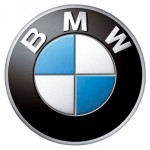
BMW segmentation, targeting and positioning can be specified as the base of the marketing efforts of the company. BMW, as well as, any other business entity has to divide population into different categories according to a set of certain criteria and develop products and services that are particularly attractive to this specific group. This marketing process is known as segmentation, targeting and positioning. Segmentation, targeting and positioning is important because businesses cannot offer products and services that are attractive to all members of population in an equal manner. Segmentation implies dividing potential customers into different groups according to certain criteria such as age, social class, lifestyle etc. Segmentation can be divided into four types: demographic, behavioral, and psycho-graphic. Segmentation stage is followed by targeting and this stage is associated with selection of specific group(s) as a target customer segment. Positioning is the last stage in segmentation, targeting and positioning and this stage involves selection of the marketing mix that is relevant to the chosen target customer segment in the best possible manner. BMW Group uses mono-segment type of positioning and accordingly, the company makes an appeal to a single customer segment. In other words, BMW Group product portfolio only comprises expensive vehicles at a premium level and the company does not have budget vehicles in its portfolio to target individuals and households with a smaller budget. The following table illustrates BMW segmentation, targeting and positioning: Type of segmentation Segmentation criteria BMW Group target segment BMW MINI Rolls-Royce Geog-raphic Region Domestic/international Domestic/international Domestic/international Density Urban/rural Urban Urban Demog-raphic Age 20-65 25-45 40+ Gender Males & Females Males & Females Males & Females Life-cycle stage Bachelor StageNewly MarriedCouples Full Nest I Full Nest II Full Nest III Empty Nest I Empty Nest II Solitary Survivor I Solitary Survivor II Bachelor StageNewly MarriedCouples Full Nest I…
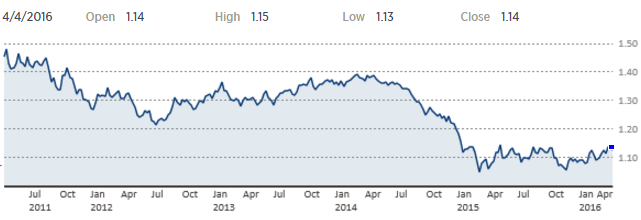
PESTEL is a strategic analytical tool and the acronym stands for political, economic, social, technological, environmental and legal factors. BMW PESTEL analysis involves the analysis of potential impact of these factors on the bottom line and long-term growth prospects Political Factors There is a wide range of political factors that affect BMW Group in various ways. For example, enforcement of new laws related to CO2 emission and change in EU legislation related to end-of-life vehicle (ELV) recycling are major political factors that affect BMW manufacturing processes. Level of political stability in emerging markets such as Russia, China, and Brazil can be highlighted as additional political factors impacting BMW in a way that political instability in these countries can have negative implications on local consumer spending patterns. Additionally, in case of political instability BMW investments in respective countries may be subjected to risks. There are also instances where BMW has attempted to influence external political factors to create a favourable political climate for its business operations. The opposition of the company to European commission proposals for a tougher limit on carbon emissions in 2012 can be mentioned to justify this claim. Specifically, it was noted that BMW was lobbying to water down European plans to improve the fuel efficiency of cars at the same time as trumpeting its green credentials as the official car sponsor of the Olympic Games, according to internal documents seen by the Guardian[1]. Economic Factors Impacts of a wide range of economic factors on BMW performance are evident and significant. Namely, vast GDP fluctuations in EU countries during the last few years with direct implications on consumer spending in EU countries is a substantial economic factor that affects BMW Group performance to a considerable extent. Currency exchange rate can be named as another important economic factor that has…
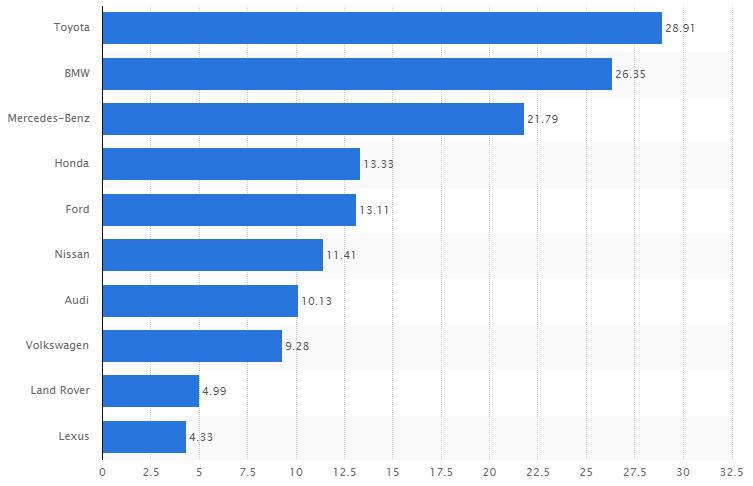
SWOT analysis can be described as “a technique for focusing an individual’s or group’s attention on strengths, weaknesses, opportunities and threats. It is useful particularly because strengths and weaknesses can be the cause of potential future risks – both opportunities and/or threats” (Murray-Webster, 2010, p.88). The following table illustrates BMW SWOT analysis: Strengths 1. Strong brand image 2. Highly automated driving experience and advanced features and capabilities 3. Strong performance of Financial Services Segment 4. Strong CSR performance 5. Reliability of vehicle Weaknesses 1. High level of vulnerability to the future economic crises due to premium pricing strategy 2. Lack of strategic partnerships compared to the competition 3. Weak BMW brand portfolio with only three brands: BMW, MINI, and Rolls Royce 4. Lack of operational cost efficiency 5. Damage to the brand image due to air bag issue Opportunities 1. Increasing revenues through more emphasis on electromobility 2. Formation of strategic alliances with other automobile companies 3. Launch of BMW 9 Series generation 4. Increasing presence in Chinese market 5. Engaging in product diversification Threats 1. Further increases on the prices of raw materials 2. Emergence of new competition from emerging economies 3. Negative impacts from exchange rate fluctuations 4. Damage to the brand image due to malfunctions 5. Loss of talent and key personnel to competitors BMW SWOT analysis Strengths 1. BMW is a highly reputable brand with strong brand image with is associated with efficiency and prestige. As it is illustrated in Figure 1 below, BMW is the second most valuable brand in automobile industry after Toyota with an estimated brand value of USD 6.35 billion. High brand value is a considerable strength for any business as it is a convincing indicator of a high level of consumer loyalty. Figure 1 Automobile brand values in billion…
